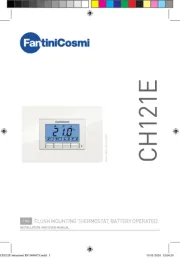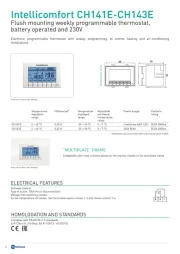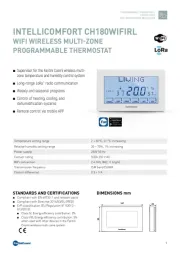Fantini Cosmi L03B Bedienungsanleitung
Fantini Cosmi
Thermostat
L03B
Lies die bedienungsanleitung für Fantini Cosmi L03B (2 Seiten) kostenlos online; sie gehört zur Kategorie Thermostat. Dieses Handbuch wurde von 21 Personen als hilfreich bewertet und erhielt im Schnitt 4.5 Sterne aus 11 Bewertungen. Hast du eine Frage zu Fantini Cosmi L03B oder möchtest du andere Nutzer dieses Produkts befragen? Stelle eine Frage
Seite 1/2

PARAMETRI DI CONFIGURAZIONE
Per accedere al menù di configurazione dei parametri, premere per 5 secondi i tasti ■ + .
Con i tasti ■
o selezionare il parametro da modificare.
Premere il tasto ■
per visualizzare il valore.
Mantenendo premuto ■
agire con i tasti o per impostare il valore desiderato.
Al rilascio del tasto ■
il nuovo valore viene memorizzato e viene visualizzato il parametro successivo.
Per uscire dal setup premere il tasto ■
o attendere 30 secondi.
PAR RANGE DESCRIZIONE
SPL
-50°...SPH Limite minimo per la regolazione di 1SP.
SPH
SPL...150° Limite massimo per la regolazione di 1SP.
SP
SPL... SPH Temperatura di commutazione (valore che si desidera mantenere).
1CM
HY; PID Modalità di controllo.
Con 1CM=HY si seleziona la regolazione con isteresi: nel controllo vengono usati i parametri
1HY, 1T0 e 1T1. Con 1CM=PID si seleziona la regolazione Proporzionale-Integrativa-Derivativa:
nel controllo vengono usati i parametri 1PB, 1IT, 1DT, 1AR, 1CT.
1CH
REF; HEA Modo di regolazione refrigerazione (REF) o riscaldamento (HEA) dell’uscita 1.
1CM=HY
1HY
0...19.9° Differenziale del termostato. Con 1HY=0 l’uscita rimane sempre spenta.
1T0
0...30min Tempo minimo di spegnimento
Dopo uno spegnimento, l’uscita 1 rimane disattivata per 1T0 minuti indipendentemente dal valore
della temperatura.
1T1
0...30min Tempo minimo di attivazione. (Il parametro successivo sarà 1PF)
Dopo una accensione, l’uscita 1 rimane attivata per 1T1 minuti indipendentemente dal valore
della temperatura.
1CM=PID
1PB
0...19.9° Banda proporzionale.
Il controllo della temperatura avviene variando il
tempo di ON dell’uscita: più la temperatura è vicina
al setpoint, minore e’ il tempo di attivazione. Una
banda proporzionale piccola aumenta la prontezza
del sistema alle variazioni di temperatura, ma tende
a renderlo meno stabile. Un controllo puramente
proporzionale stabilizza la temperatura all’interno
della banda proporzionale, ma non annulla lo
scostamento dal setpoint.
Con 1PB=0 l’uscita rimane sempre spenta.
1IT
0...999s Tempo dell’azione integrativa.
L’inserimento di un’azione integrativa annulla
l’errore a regime. Il tempo dell’azione integrativa
determina la velocità con cui si raggiunge la
temperatura di regime, p1-ma un’elevata velocità (1IT
basso) può essere causa di sovraelongazione e di
instabilità nella risposta.
Con 1IT=0 il controllo integrativo viene disabilitato.
1DT
0...999s Tempo dell’azione derivativa.
L’inserimento di un’azione derivativa diminuisce
la sovraelongazione nella risposta. Un’azione
derivativa elevata (1DT alto) rende il sistema molto
sensibile alle piccole variazioni di temperatura, e
può portare instabilità.
Con 1DT=0 il controllo derivativo viene disabilitato.
1AR
0...100% Reset dell’azione integrativa riferito a 1PB.
Diminuendo il parametro 1AR si restringe la zona di azione del controllo integrativo, e di
conseguenza la sovraelongazione (vedi figura nel parametro 1IT)
1CT
1...255s Tempo di ciclo.
E’ il periodo all’interno del quale varia il tempo di ON dell’uscita. Quanto più velocemente il
sistema da controllare risponde alle variazioni della temperatura, tanto minore deve essere il
tempo di ciclo, per ottenere una maggiore stabilità della temperatura, e una minore sensibilità
alle variazioni di carico.
1PF
ON/OFF Stato dell’uscita con sonda difettosa.
OAU
NON;
THR;
AL0;
AL1
Funzionamento dell’uscita ausiliaria AUX.
NON: uscita disabilitata (sempre spenta). (Il prossimo parametro sarà ATM).
THR: uscita programmata come secondo termostato. (Il prossimo parametro sarà 2SM)
AL0: apertura dei contatti al presentarsi di una condizione di allarme. (Il prossimo parametro sarà ATM)
AL1: chiusura dei contatti al presentarsi di una condizione di allarme. (Il prossimo parametro sarà ATM)
OAU=THR
2SM
ABS;
REL
Modalità setpoint 2.
Il setpoint del canale 2 può essere assoluto (2SM=ABS), o un differenziale relativo al setpoint 1 (2SM=REL)
2SM=ABS
2SP
SPL...SPH Temperatura di commutazione dell’uscita ausiliaria (Il prossimo parametro sarà 2CH)
2SM=REL
2DF
-19.9...19.9° Differenziale di temperatura rispetto a 1SP. Il setpoint dell’uscita ausiliaria è pari a 1SP+2DF
Controllo ON/OFF in refrigerazione
(1CM=HY, 1CH=REF)
Controllo ON/OFF in riscaldamento
(1CM=HY, 1CH=HEA)
1SP
1SP+1HY
T[°]
ON
OFF
1SP1SP-1HY
T[°]
ON
OFF
Tempo
Temperatura
1PB
1SP
Sovraelongazione
Temperatura
processo
Error e a regime
Tempo
Temperatura
1PB
1PBx1AR%
Zona di azione
controllo integrale
1SP
Sovraelongazione
Temperatura
processo
Tempo
Temperatura
1PB
1SP
Temperatura
processo
Sovraelongazione
2SP
2SP+2HY
T[°]
ON
OFF
2SP2SP-2HY
T[°]
ON
OFF
Controllo ON/OFF in refrigerazione
(2SM=ABS, 2CH=REF)
Controllo ON/OFF in riscaldamento
(2SM=ABS, 2CH=HEA)
1SP+2DF
1SP
2DF>0
1SP+2DF+2HY
T[°]
ON
OFF
1SP
1SP+2DF
2DF<0
1SP+2DF-2HY
T[°]
ON
OFF
Controllo ON/OFF in refrigerazione. Setpoint 2
relativo al setpoint 1 (OAU=THR, 2CH=REF)
Controllo ON/OFF in riscaldamento. Setpoint 2
relativo al setpoint 1 (OAU=THR, 2CH=HEA)
DATI TECNICI
Alimentazione
L03BI-- 12Vac / 7..30Vdc ±10%, 3W
L03BM--/L23EM1B230Vac±10%, 50/60Hz, 3W
Uscite relè (L03B--/L23EM1B)
OUT1
12(3.6)A 240Vac
OUT2
12(3.6)A 240Vac
Ingressi
vd. tabella caratteristiche ingresso
Range di Misura
vd. tabella caratteristiche ingresso
Precisione di misura
vd. tabella caratteristiche ingresso
Condizioni operative
-10 … +50°C; 15%...80% U.R.
CE (Norme di Riferimento)
EN60730-1; EN60730-2-9;
Protezione frontale
IP40
OAU=THR
2CH
REF; HEA Modo di regolazione refrigerazione (REF) o riscaldamento (HEA) per l’uscita ausiliaria
2HY
0...19.9° Differenziale del termostato 2. Con 2HY=0 l’uscita ausiliaria rimane sempre spenta.
2T0
0...30min Tempo minimo di spegnimento.
Dopo uno spegnimento, l’uscita 2 rimane disattivata per 2T0 minuti indipendentemente dal
valore della temperatura.
2T1
0...30min Tempo minimo di attivazione
Dopo una accensione, l’uscita 2 rimane attivata per 2T1 minuti indipendentemente dal valore
della temperatura.
2PF
ON/OFF Stato dell’uscita 2 con sonda difettosa
ATM
NON;
ABS;
REL
Gestione soglie allarme.
NON: tutti gli allarmi di temperatura sono interdetti. (il successivo paramentro visualizzato sarà SB)
ABS: i valori programmati in ALA e AHA rappresentano le reali soglie d’allarme
REL: i valori programmati in ALR e AHR sono i differenziali d’allarme rispetto a 1SP e 1SP+1HY
ATM=ABS
ALA
-50°...AHA Soglia d’allarme di bassa temperatura
AHA
ALA...150° Soglia d’allarme di alta temperatura
ATM=REL
ALR
-12.0...0° Differenziale d’allarme di bassa temperatura.
Con ALR=0 l’allarme di bassa temperatura viene escluso.
AHR
0...12.0° Differenziale d’allarme di alta temperatura.
Con AHR=0 l’allarme di alta temperatura viene escluso.
ATD
0...120min Ritardo nella segnalazione dell’allarme di temperatura
SB
NO/YES Abilitazione tasto stand-by
INP
0mA/4mA,
T1/T2
ST1/SN4
Selezione del sensore in ingresso. (vd. tabella caratteristiche ingresso)
nb: “0mA/4mA”, “T1” e “T2” non sono disponibili
RLO
-19.9...RHI Range minimo della scala
Ad RLO viene assegnato il valore minimo misurato dal trasmettitore (corrispondente a 0V, 0/4mA)
RHI
RLO...99.9 Range massimo della scala
Ad RHI viene assegnato il valore massimo misurato dal trasmettitore (corrispondente a 1V, 20mA)
OS1
-12.5...12.5° Correzione misura sonda T1
TLD
1...30min Ritardo della memorizzazione delle temperature minime (TLO) e massime (THI) raggiunte.
SIM
0...100 Rallentamento display
ADR
1...255 Indirizzo per la comunicazione con PC (funzione non disponibile)
CARATTERISTICHE INGRESSO
SCHEMI DI COLLEGAMENTO
1SP
1SP-ALR
T[°]
ON
OFF
1SP+1HY+AHR
1SP1SP-1HY -ALR
1SP+AHR
T[°]
ON
OFF
Allarme di temperatura con soglie relative, con-
trollo in refrigerazione (ATM=REL, 1CH=REF)
Allarme di temperatura con soglie relative, con-
trollo in riscaldamento (ATM=REL, 1CH=HEA)
L03BM--
1211
230V ~
OUT 2
18 17 16
OUT 1
21 20 19
2 3
12(3,6)A
12(3,6)A
L03BI--
1211
12Vac / 7.. 30 Vdc
OUT 2
18 17 16
OUT 1
21 20 19
2 3
12(3,6)A12(3,6)A
VISUALIZZAZIONI
In funzionamento normale sul display viene visualizzata la temperatura rilevata oppure una delle indicazioni seguenti:
Strumento in stand-by Strumento in autotuning
Over range o rottura sonda T1 In tuning: errore di timeout1
Allarme alta temperatura In tuning: errore di timeout2
Allarme di bassa temperatura In tuning: errore di over range
MENU INFO
Le informazioni disponibili nel menù info sono:
Temperatura massima registrata sonda 1 Stato della tastiera (blocco)
Temperatura minima registrata sonda 1
Accesso al menù e visualizzazione informazioni.
Premere e subito rilasciare il tasto ■
.
Con i tasti ■
o selezionare il dato da visualizzare.
Premere il tasto ■
per visualizzare il valore.
Per uscire dal menù, premere il tasto ■
o attendere 10 secondi.
Reset delle memorizzazioni THI, TLO
Con i tasti ■
o selezionare il dato da resettare.
Visualizzare il valore con il tasto ■
.
Mantenendo premuto il tasto ■
premere il tasto .
SETPOINT CANALE 1 (visualizzazione e modifica valore di temperatura desiderato)
Premere e rilasciare il tasto ■
: il led L1 lampeggia, il display visualizza per 1 secondo 1SP quindi il valore associato al setpoint.
Agire con i tasti ■
o per impostare il valore desiderato (la regolazione è compresa entro il limite minimo SPL e massimo SPH).
Per memorizzare il nuovo valore premere il tasto ■
, o attendere 10s.
Per ritornare in modalità normale senza salvare il nuovo valore premere ■
.
SETPOINT CANALE 2
con l’uscita ausiliaria impostata come termostato ( ■ OAU=THR), è possibile modificare il setpoint 2 durante il funzionamento
normale del regolatore.
premere e rilasciare il tasto ■
: il led L2 lampeggia, il display visualizza per 1 secondo 2SP, se il setpoint 2 è impostato in modo asso-
luto (2SM=ABS), oppure visualizza 2DF, se il setpoint 2 è relativo al setpoint 1 (2SM=REL), quindi il valore associato al parametro.
agire con i tasti ■
o per impostare il valore desiderato.
per memorizzare il nuovo valore premere il tasto ■
, o attendere 10s.
per ritornare in modalità normale senza salvare il nuovo valore premere ■
.
STAND-BY
Il tasto , premuto per 3 secondi, consente di commutare lo stato del regolatore fra operatività delle uscite e standby (solo con SB=YES).
BLOCCO DELLA TASTIERA
Il blocco dei tasti impedisce operazioni indesiderate, potenzialmente dannose, che possono avvenire qualora il regolatore operi
in ambiente pubblico. Per inibire tutti i comandi da tastiera impostare LOC=YES nel menù INFO; per ripristinare la normale
funzionalità riprogrammare LOC=NO.
AUTOTUNING DEL REGOLATORE IN MODALITA’ PID
Prima di iniziare
In modalità setup (v. parametri di configurazione): impostare 1CM=PID; accertarsi che 1CH corrisponda al modo di funzionamento
voluto (1CH=REF per refrigerazione, 1CH=HEA per riscaldamento); fissare il setpoint 1SP al valore desiderato.
Avvio della funzione
Durante il funzionamento normale, mantenere premuti i tasti
+ per 3 secondi. Sul display lampeggia 1CT; con + o
impostare il tempo di ciclo in modo da caratterizzare la dinamica del processo da controllare. Per abbandonare la funzione di
autotuning premere
; per iniziare l’autotuning premere + o attendere 30s.
Durante l’autotuning
Durante tutta la fase di autotuning il display visualizza alternativamente TUN e il valore della temperatura misurata. Se manca
l’alimentazione, alla successiva riaccensione, dopo la fase iniziale di autotest, lo strumento riprende la funzione di autotuning. Per
abbandonare la funzione di autotuning, senza modificare i parametri di controllo, mantenere premuto per 3 secondi il tasto
.
Terminato con successo l’autotuning il controllore aggiorna il valore dei parametri di controllo, e inizia a regolare.
Errori
Se la funzione di autotuning non p1-ha esito positivo, sul display lampeggia un codice d’errore:
E1 errore di timeout1: il controllore non è riuscito a portare la temperatura all’interno della banda proporzionale. Aumentare ■ 1SP
nel caso di controllo in riscaldamento, viceversa, diminuire 1SP in raffreddamento e riavviare la procedura.
E2 errore di timeout2: l’autotuning non è terminato entro il tempo massimo stabilito (1000 tempi di ciclo). Riavviare la procedura ■
di autotuning e impostare un tempo di ciclo maggiore.
E3 over range di temperatura: controllare che l’errore non sia causato da un’anomalia della sonda, quindi diminuire ■ 1SP nel
caso di controllo in riscaldamento, viceversa aumentare 1SP in raffreddamento e riavviare la procedura.
Per eliminare l’indicazione d’errore e ritornare in modalità normale premere il tasto ■
.
Miglioramento del controllo
per ridurre la sovraelongazione diminuire il reset dell’azione integrativa ■ 1AR;
per aumentare la prontezza del sistema diminuire la banda proporzionale ■ 1PB; attenzione: in tale maniera si porta il sistema ad
essere meno stabile (oscillazione della temperatura);
per ridurre le oscillazioni della temperatura a regime aumentare il tempo dell’azione integrativa ■ 1IT; si aumenta così la stabilità
del sistema, p1-ma si diminuisce la sua prontezza di risposta;
per aumentare la velocità di risposta alle variazioni di temperatura aumentare il tempo dell’azione derivativa ■ 1DT; attenzione:
un valore elevato rende il sistema sensibile alle piccole variazioni e può essere fonte di instabilità.
FUNZIONAMENTO
Lo strumento ha dimensioni 71x98x61 mm (LxHxP); va fissato ad una barra DIN in una posizione tale da garantire l’impossibilità ■
di infiltrazioni che potrebbero causare gravi danni e compromettere la sicurezza;
Eseguire i collegamenti elettrici facendo riferimento al paragrafo “schemi di collegamento”. Per ridurre gli effetti delle perturbazioni ■
elettromagnetiche, distanziare i cavi delle sonde e di segnale dai conduttori di potenza.
Posizionare la sonda T1 in un punto della cella che ben rappresenti la temperatura del prodotto da conservare.■
INSTALLAZIONE
OUT1
OUT2
L1
L2
Uscita canale 1
Uscita canale 2
Allarme
Modifica setpoint canale 1
Modifica setpoint canale 2
Tasto Info / Enter.
Fig.1 - Pannello frontale
Tasto modifica setpoint 1 / decremento.
Tasto incremento / modifica setpoint 2
Tasto uscita / Stand-by.
Vi ringraziamo per la preferenza accordataci scegliendo un prodotto Fantini Cosmi. Prima di procedere all’installazione dello
strumento, leggete attentamente il presente foglio d’istruzioni: solo così potrete ottenere massime prestazioni e sicurezza.
DESCRIZIONE
INDICAZIONI
L03B--/L23EM1B ISTRUZIONI D’USO
MODELLO INGRESSO
RANGE DI MISURA [PRECISIONE DI MISURA]
RES=r01 (UM=C) RES=r1 (UM=C)
RES=r1 (UM=F)
L03B--
L23EM1B
INP=ST1
0÷1V (LS160A) RLO÷RHI [< ± 3mV] -----
PTC 1000 Ω
(LS120)
-50/-19.9 ÷ 99.9/150°C
[<±0.3°C(-40÷130°),±1°
C]
-50 ÷ 150°C
[<±0.3°C (-40÷130°),±1°C]
-60 ÷ 300°F
[<±0.6°F (-40÷221°),±2°F]
INP=SN4
NTC 10K Ω
(LS130)
-50/-19.9 ÷ 99.9/125°C
[<±0.3°C(-40÷100°), ±1°C]
-50 ÷ 125°C
[<±0.3°C (-40÷100°),±1°C]
-60 ÷ 300°F
[<±0.6°F (-40÷210°),±2°F]
Via Dell’Osio 6
20049 Caleppio di Settala MI
TEL. 02-956821
FAX 02-95307006
http://www.fantinicosmi.it
e-mail: info@fantinicosmi.it
Supporto tecnico: supportotecnico@fantinicosmi.it
TERMOSTATI/UMIDOSTATI A 1-2 USCITE
L03B-- / L23EM1B
Montaggio da barra DIN
5680057
L23EM1B
11 12
230V ~
OUT 1
21 20 19
rH
V
2
3
4
V
IN
V+V-
12(3,6)A
c; F; Non
UM
Risoluzione della misura: r01=0,1°; r1=1°.
Questo parametro non è presente se UM=F e nel modello AC2-27J
RES
Unità di misura per la regolazione. Non è presente nei modelli AC2-27A E AC2-27I
r01; r1
N
L
Vdc
-
+
N
L
Informazioni riguardanti
esclusivamente gli stati
dell’Unione Europea
Smaltimento dei prodotti
Il simbolo del cestino con le rotelle a cui è
sovrapposta una croce indica che i prodotti vanno
raccolti e smaltiti separatamente dai rifiuti domestici.
Le batterie e gli accumulatori integrati
possono esse re smaltiti insieme al prodotto.
Verranno separati presso i centri di riciclaggio.
Una barra nera indica che il prodotto è stato introdotto
sul mercato dopo il 13 agosto 2005.
Partecipando alla raccolta differenziata di prodotti e
batterie, si contribuisce allo smaltimento
corretto di questi materiali e quindi a evitare possibili
conseguenze negative per l’ambiente e la
salute umana.
Per informazioni più dettagliate sui programmi di
raccolta e riciclaggio disponibili nel proprio
paese, rivolgersi alla sede locale o al punto vendita in
cui è stato acquistato il prodotto

CONFIGURATION PARAMETERS
To get access to the parameter configuration menu, press button ■ + for 5 seconds.
With button ■
or select the parameter to be modified.
Press button ■
to display the value.
By keeping button ■
pressed, use button or to set the desired value.
When button ■
is released, the newly programmed value is stored and the following parameter is displayed.
To exit from the setup, press button ■
or wait for 30 seconds.
PAR RANGE DESCRIPTION
SPL
-50°...SPH Minimum limit for 1SP setting
SPH
SPL...150° Maximum limit for 1SP setting.
SP
SPL... SPH Setpoint (value to be maintained in the room).
1CM
HY; PID Control mode.
With 1CM=HY you select control with hysteresis: parameters 1HY, 1T0 and 1T1 are used.
With 1CM=PID you select a Proportional-Integral-Derivative control mode: parameters 1PB, 1IT,
1DT, 1AR, 1CT will be used
1CH
REF; HEA Refrigerating (REF) or Heating (HEA) control mode.
1CM=HY
1HY
0...19.9° OFF/ON thermostat differential. With 1HY=0 the output is always off.
1T0
0...30min Minimum off time.
After output 1 has been turned off, it remains inactive for 1T0 minutes regardless of the
temperature value measured.
1T1
0...30min Minimum on time. (the following parameter will be 1PF).
After output 1 has been turned on, it remains active for 1T1 minutes regardless of the temperature
value measured.
1CM=PID
1PB
0...19.9° Proportional bandwidth.
Temperature control takes place by changing the
ON time of the output: the closer the temperature
to the setpoint, the less time of activation. A small
proportional band increases the promptness of
response of the system to temperature variations,
but tends to make it less stable. A purely
proportional control stabilises the temperature
within the proportional band but does not cancel
the deviation from setpoint.
With 1PB=0 the output is always off.
1IT
0...999s Integral action time.
The steady-state error is cancelled by inserting an
integral action. The integral action time, determines
the speed with which the steady-state temperature
is achieved, but a high speed (1IT low) may be the
cause of overshoot and instability in the response.
With 1IT=0 the integral control is disabled.
1DT
0...999s Derivative action time.
Response overshoot may be reduced by inserting
a derivative Action. A high derivative action (1DT
high) makes the system very sensitive to small
temperature variations and causes instability. With
1DT=0 the derivative control is disabled.
1AR
0...100% Reset of integral action time referred to 1PB
Decreasing the parameter 1AR reduces the integral control action zone, and consequently the
overshoot (see figure on paragraph 1IT).
1CT
1...255s Cycle time.
It’s the period in which the output ON time changes. The quicker the system to be controlled
reacts to temperature variations, the smaller the cycle time must be, in order to obtain higher
temperature stability and less sensitivity to load variations.
1PF
ON/OFF Output state in case of probe failure.
OAU
NON;
THR;
AL0;
AL1
AUX output operation.
NON : output disabled (always off). (the next parameter will be ATM)
THR: output programmed for second thermostat control (the next parameter will be 2SM).
AL0: contacts open when an alarm condition occurs (the next parameter will be ATM).
AL1: contacts make when an alarm condition occurs (the next parameter will be ATM).
OAU=THR
2SM
ABS;
REL
Setpoint 2 mode.
Channel 2 setpoint may be absolute (2SM=ABS), or a differential relative to setpoint 1 (2SM=REL)
2SM=ABS
2SP
SPL...SPH Auxiliary output switchover temperature (the next parameter will be 2CH)
2SM=REL
2DF
-19.9...19.9° Temperature differential relative to 1SP. The auxiliary output setpoint is equal to 1SP+2DF
ON/OFF refrigerating control
(1CM=HY, 1CH=REF)
ON/OFF heating control
(1CM=HY, 1CH=HEA)
1SP
1SP+1HY
T[°]
ON
OFF
1SP1SP-1HY
T[°]
ON
OFF
Time
Temperature
Process
temperature
Overshoot
S teady-st ate error
1PB
1SP
Time
Temperature
Process
temperature
Overshoot
1PB
1PBx1AR%
integral control
action area
1SP
Time
Temperature
Process
temperature
Overshoot
1PB
1SP
2SP
2SP+2HY
T[°]
ON
OFF
2SP2SP-2HY
T[°]
ON
OFF
ON/OFF control in refrigeration
(2SM=ABS, 2CH=REF)
ON/OFF control in heating
(2SM=ABS, 2CH=HEA)
1SP+2DF
1SP
2DF>0
1SP+2DF+2HY
T[°]
ON
OFF
1SP
1SP+2DF
2DF<0
1SP+2DF-2HY
T[°]
ON
OFF
ON/OFF control in refrigeration. Setpoint 2
relative to setpoint 1 (OAU=THR, 2CH=REF)
ON/OFF control in heating. Setpoint 2
relative to setpoint 1 (OAU=THR, 2CH=HEA)
TECHNICAL DATA
Power supply
L03BI-
L03BM-
12Vac/
7..30Vdc ±10%, 3W
230
V
ac±10%, 50/60Hz, 3W
Relay outputs (L03B---)
OUT1
12(3,6)A 240Vac
OUT2
Inputs
see table of input specifications
Measurement range
see table of input specifications
Measurement accuracy
see table of input specifications
Operating conditions
-10 … +50°C; 15%...80% r.H.
CE (Reference Norms)
EN60730-1; EN60730-2-9;
Front protection
IP40
OAU=THR
2CH
REF; HEA Refrigerating control (REF) or heating control mode (HEA) for the auxiliary output.
2HY
0...19.9° Differential of thermostat 2. With 2HY=0 the auxiliary output always remains off.
2T0
0...30min Minimum off time.
After output 2 has been turned off, it remains inactive for 2T0 minutes regardless of the temperature
value measured.
2T1
0...30min Minimum on time.
After output 2 has been turned on, it remains active for 2T1 minutes regardless of the temperature
value measured.
2PF
ON/OFF Auxiliary output state in case of probe failure.
ATM
NON;
ABS;
REL
Alarm threshold management.
NON: all temperature alarms are inhibited (the following parameter will be SB).
ABS: the values programmed in ALA and AHA represent the real alarm thresholds.
REL: the values programmed in ALR and AHR are alarm differentials referred to 1SP and 1SP+1HY.
ATM=ABS
ALA
-50°...AHA Low temperature alarm threshold.
AHA
ALA...150° High temperature alarm threshold.
ATM=REL
ALR
-12.0...0° Low temperature alarm differential.
With ALR=0 the low temperature alarm is excluded
AHR
0...12.0° High temperature alarm differential.
With AHR=0 the high temperature alarm is excluded
ATD
0...120min Delay before alarm temperature warning.
SB
NO/YES Stand-by button enabling.
INP
0mA/4mA,
T1/T2
ST1/SN4
Sensor input selection (see table of input specifications).
Warning: “0mA/4mA”, “T1” and “T2” are not available
RLO
-19.9...RHI Minimum range value
RLO takes the minimum value measured by the transmitter (i.e. the value matching 0V, 0/4mA).
RHI
RLO...99.9 Maximum range value
RHI takes the maximum value measured by the transmitter (i.e. the value matching 1V, 20mA)
OS1
-12.5...12.5° Probe T1 offset.
TLD
1...30min Delay for minimum temperature (TLO) and maximum temperature (THI) logging.
SIM
0...100 Display slowdown
ADR
1...255 address for PC communication (not available)
INPUT SPECIFICATIONS
WIRING DIAGRAMS
1SP
1SP-ALR
T[°]
ON
OFF
1SP+1HY+AHR
1SP1SP-1HY -ALR
1SP+AHR
T[°]
ON
OFF
Temperature alarm with relative thresholds,
refrigerating control (ATM=REL, 1CH=REF)
Temperature alarm with relative thresholds,
heating control (ATM=REL, 1CH=HEA).
L03BM--
11
230V ~
OUT 2
18 17 16
OUT 1
21 20 19
2 3
12(3,6)A12(3,6)A
DISPLAY
During normal operation, the display shows either the temperature measured or one of the following indications:
Controller in stand-by Controller in autotuning
Probe T1 overrange or failure In tuning: timeout1 error
Room high temperature alarm In tuning: timeout2 error
Room low temperature alarm In tuning: overrange error
MENU INFO
The information available in this menu is:
Maximum temperature recorded Keypad state lock
Minimum temperature recorded
Access to menu and information displayed.
Press and immediately release button ■
.
With button ■
or select the data to be displayed.
Press button ■
to display value.
To exit from the menu, press button ■
or wait for 10 seconds.
Reset of THI, TLO recordings
With button ■
or select the data to be reset.
Display the value with button ■
.
While keeping button ■
pressed, use button .
CHANNEL 1 SETPOINT (display and modification of desired temperature value)
Press and release button ■
: the LED L1 blinks, the display shows 1SP for 1 second and then the setpoint associated value.
Press buttons ■
or to set the desired value (adjustment is within the minimum SPL and maximum SPH limit).
To store the new value press button ■
, or wait for 10 seconds.
To go back to normal mode without saving the new value, press ■
.
CHANNEL 2 SETPOINT
With the auxiliary output set as thermostat control ( ■ OAU=THR), it’s possible to modify setpoint 2 during the normal operation
of the controller.
Press and release button ■
: the LED L2 blinks, the display shows 2SP for 1 second if setpoint 2 is an absolute threshold
(2SM=ABS), alternatively the display shows 2DF, if setpoint 2 is a threshold relative to setpoint 1 (2SM=REL), then the value
associated to the parameter appears.
Press buttons ■
or to set the desired value.
To store the new value press button ■
or wait for 10 seconds.
To go back to normal mode without saving the new value, press ■
.
STAND-BY
Button , when pressed for 3 seconds, allows the controller to be put on a standby or output control to be resumed (with SB=YES only).
KEYPAD LOCK
The keypad lock avoids undesired, potentially dangerous operations, which might be attempted when the controllers is operating
in a public place. In the INFO menu, set parameter LOC=YES to inhibit all functions of the buttons. To resume normal operation
of keypad, adjust setting so that LOC=NO.
CONTROLLER AUTOTUNING IN PID MODE
Before starting
In the setup mode (see configuration parameters): set 1CM=PID; make sure that 1CH matches the desired operation mode
(1CH=REF for refrigerating control, 1CH=HEA for heating control); then adjust setpoint 1SP at the desired value.
Start autotuning
During normal operation, keep buttons
+ pressed for 3 seconds. 1CT blinks on the display. With + or set the cycle
time in order to define the dynamic of the process to be controlled. To abort the autotuning function, press
; to start autotuning
press
+ or wait for 30 seconds.
During autotuning
During the entire autotuning phase, the display alternates TUN with the actual temperature measured. In case of power failure,
when power is resumed, after the initial autotest phase, the controller resumes the autotuning function. To abort the autotuning,
without modifying the previous control parameters, keep button
pressed for 3 seconds. After the autotuning has taken place
successfully, the controller updates the control parameters and start to control.
Errors
If the autotuning function failed, the display shows an error code:
E1 timeout1 error: the controller could not bring the temperature within the proportional band. Increase ■ 1SP in case of heating
control, vice versa, decrease 1SP in case of refrigerating control and re-start the process.
E2 timeout2 error: the autotuning has not ended within the maximum time allowed (1000 cycle times). Re-start the autotuning ■
process and set a longer cycle time 1CT.
E3 temperature overrange: check that the error was not caused by a probe malfunction, then decrease ■ 1SP in case of heating
control, vice versa increase 1SP in case of refrigerating control and then re-start the process.
To eliminate the error indication and return to the normal mode, press button ■
.
Control improvement
To reduce overshoot, reduce the integral action reset ■ 1AR
To increase the response speed of the system, reduce the proportional band ■ 1PB. Caution: doing this makes the system less stable.
To reduce swings in steady-state temperature, increase the integral action time ■ 1IT; system stability is thus increased, although
its response speed is decreased.
To increase the speed of response to the variations in temperature, increase the derivative action time ■ 1DT. Caution: a high
value makes the system sensitive to small variations and it may be a source of instability.
OPERATION
The L03B-- controller, size 71x98x61 mm (WxHxD), is to be secured to a DIN rail in such a position as to ensure that no liquid ■
infiltrates causing serious damage and compromising safety;
Make sure that electrical connections comply with the paragraph “wiring diagrams”. To reduce the effects of electromagnetic ■
disturbance, keep the sensor and signal cables well separate from the power wires.
Place the probe T1 inside the room in a point that truly represents the temperature of the stored product.■
INSTALLATION
OUT1
OUT2
L1
L2
Channel 1 output
Channel 2 output
Alarm
Channel 1 setpoint modification
Channel 2 setpoint modification
Fig.1 - Front panel
Thank you for having chosen a Fantini Cosmi product. Before installing the instrument, please read these instructions carefully
to ensure maximum performance and safety.
DESCRIPTION
INDICATION
L03B--/L23EM1A INSTRUCTION FOR USE
Info / Enter button
Modify Setpoint 1 / Decrease button
Increase / Modify Setpoint 2 button
Exit / Stand-by button
MODEL INPUT
RANGE [MEASUREMENT ACCURACY]
RES=r01 (UM=C) RES=r1 (UM=C) RES=r1 (UM=F)
L03B--
INP=ST1
PTC 1000 Ω
(LS120)
-50/-19.9 ÷ 99.9/125°C
[<±0.3°C(-40÷130°),±1°C]
-50 ÷ 150°C
[<±0.3°C (-40÷130°),±1°C]
-60 ÷ 300°F
[<±0.6°F (-40÷221°),±2°F]
INP=SN4
NTC 10K Ω
(LS130)
-50/-19.9 ÷ 99.9/125°C
[<±0.3°C(-40÷100°), ±1°C]
-50 ÷ 125°C
[<±0.3°C (-40÷100°),±1°C]
-60 ÷ 300°F
[<±0.6°F (-40÷210°),±2°F]
Via Dell’Osio 6
20049 Caleppio di Settala MI ITALIA
Phone no. +39 02 95682.222
Fax no. +39 02 95307006
Web: www.fantinicosmi.it
e-mail: export@fantinicosmi.it
L03BI--
12Vac/7..30Vdc
OUT 2
18 17 16
OUT 1
21 20 19
2 3
L23EM1B
230V ~
OUT 1
21 20 19
rH
V
2
3
4
V
IN
V+V-
L23EM1B
0÷1V (LS160A) RLO÷RHI [< ± 3mV] -----
Unit of measure for control. Non is available in the models AC2-27A and AC2-27I.
Resolution of measure: r01 =0.1
°
; r1 =1
°
.
This parameter is noi available when UM=F and in the model AC2-27 J.
12(3,6)A 240Vac
N
L
12(3,6)A
12(3,6)A
12(3,6)A
1211
Vdc
-
+
12
1211
N
L
Following Information is Only for EU-
Member States
Disposal of Products
The crossed out wheeled dust bin symbol indicates that
products must be collected and disposed of
separately from household waste. Integrated batteries and
accumulators can be disposed of with the
product. They will be separated at the recycling centres.
The black bar indicates that the product was placed on the
market after August 13, 2005.
By participating in separate collection of products and
batteries, you will help to assure the
proper disposal of products and batteries and thus help to
prevent potential negative consequences
for the environment and human health.
For more detailed information about the collection and
recycling program es available in your
country, please contact your local city office or the shop
where you purchased the product.
Produktspezifikationen
| Marke: | Fantini Cosmi |
| Kategorie: | Thermostat |
| Modell: | L03B |
Brauchst du Hilfe?
Wenn Sie Hilfe mit Fantini Cosmi L03B benötigen, stellen Sie unten eine Frage und andere Benutzer werden Ihnen antworten
Bedienungsanleitung Thermostat Fantini Cosmi
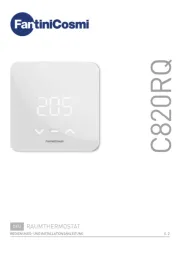
20 Juni 2025

20 Juni 2025
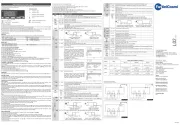
20 Juni 2025
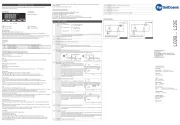
20 Juni 2025
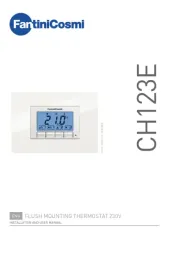
20 Juni 2025

19 Juni 2025

19 Juni 2025
Bedienungsanleitung Thermostat
- Tesla
- Levoit
- Nest
- MKC
- Tellur
- Econo-heat
- ELV
- Sinustec
- Worcester-Bosch
- Wattio
- UPM
- Nobo
- Hugo Muller
- EQ3
- Helios (Amfra)
Neueste Bedienungsanleitung für -Kategorien-
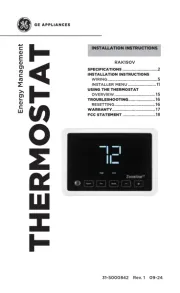
7 August 2025
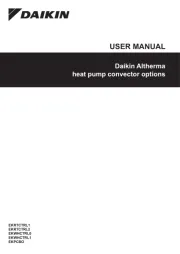
3 August 2025
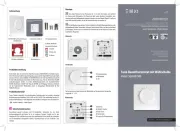
1 August 2025
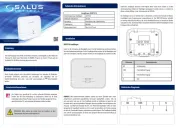
31 Juli 2025

31 Juli 2025
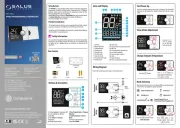
31 Juli 2025
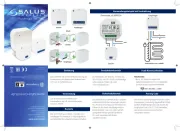
31 Juli 2025
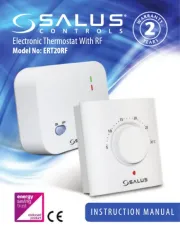
31 Juli 2025
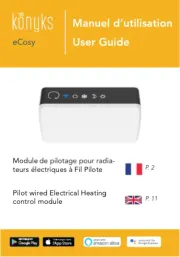
30 Juli 2025

28 Juli 2025
